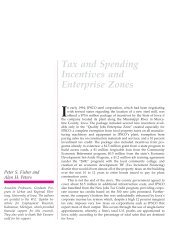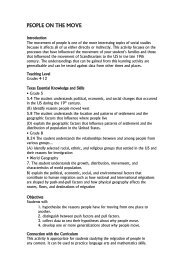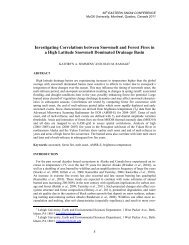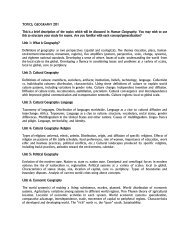Texas Social Studies Framework - Department of Geography ...
Texas Social Studies Framework - Department of Geography ...
Texas Social Studies Framework - Department of Geography ...
You also want an ePaper? Increase the reach of your titles
YUMPU automatically turns print PDFs into web optimized ePapers that Google loves.
Chapter 5: The Teaching-Learning System: Curriculum, Instruction, and Assessment<br />
Strategy<br />
Spatial<br />
Time<br />
Procedures<br />
Logic<br />
Taxonomies<br />
Typologies<br />
Cause-Effect<br />
Similarities/<br />
Differences<br />
Forms/<br />
Functions<br />
Advantage/<br />
Disadvantage<br />
Figure 15: Organizing or Chunking Strategies<br />
Description<br />
Arrays <strong>of</strong> information organized<br />
by actual location in space.<br />
Narratives, story telling,<br />
sequencing. Problems, action,<br />
results. Cause and effect.<br />
Steps and stages, e.g., food<br />
gathering, how a bill becomes a<br />
law, making a decision, solving a<br />
problem.<br />
Structured around induction and<br />
deduction, stories that unfold<br />
from statements.<br />
Classification based on structural<br />
features, similarities, or functions.<br />
Classification based on groups<br />
within a subject field.<br />
Determine which thing caused<br />
another thing to happen, or what<br />
resulted from another action.<br />
Compare and contrast. Think<br />
about something students know,<br />
then transfer/compare to<br />
something new.<br />
Organize material by structure<br />
(What is X like?) and function<br />
(How does X work?). Use ideas<br />
<strong>of</strong> process and system.<br />
Sort material by advantages and<br />
disadvantages, pros and cons.<br />
Organizing Information<br />
Example<br />
Students will divide a given space into subparts to help them recall<br />
concrete information, e.g., in order to learn the states <strong>of</strong> the United<br />
States, divide the nation into regions and learn the states within each<br />
region (TEKS 5.6 & 7).<br />
41<br />
41<br />
In learning a sequence <strong>of</strong> historical events, such as the events leading up<br />
to World War I (TEKS World History 9), students can develop flow<br />
charts and orally and visually recount the sequence.<br />
In summarizing the criteria and explaining the process, students will<br />
elaborate on the steps necessary to become a naturalized citizen (TEKS<br />
8.20.E).<br />
In explaining the choices people make in the U.S. free enterprise system,<br />
students will sequence the considerations involved in the decisionmaking<br />
process (TEKS 3.9.B & 3.17.D).<br />
Classifying Information<br />
In order to understand the various physical characteristics <strong>of</strong> the<br />
environment, students will classify geographic features, e.g., bodies <strong>of</strong><br />
water, landforms, soils, natural resources (TEKS 1.6.A).<br />
In order to understand the similarities and differences within and among<br />
cultures, students will classify culture traits or institutions, e.g., religious<br />
groups, systems <strong>of</strong> government, language families (TEKS 6.15.C).<br />
Multipurpose Sorting<br />
In order for students to understand how historical events influence<br />
contemporary society, students will evaluate relationships between past<br />
conflicts and current conditions in selected contemporary societies<br />
(TEKS 6.1.B).<br />
Students learn the causes and effects <strong>of</strong> the American Revolution in<br />
Grade 5 (TEKS 5.2.B). In order for students to trace the development <strong>of</strong><br />
the <strong>Texas</strong> Revolution (TEKS 7.2.E), students will recall events leading to<br />
the American Revolution including history, economics, government<br />
systems, culture, and will compare and contrast the two revolutions.<br />
To understand similarities and differences between the U.S. and other<br />
systems <strong>of</strong> government, students will gather data on various systems,<br />
asking the following questions: What is the system like? How does it<br />
work? How do members choose a leader? How do leaders relate to other<br />
members? Then students will apply organizing strategies (similarities/<br />
differences) to compare and contrast the systems (TEKS U.S. Government<br />
13.A).<br />
To understand how technology has changed people’s lives, students will<br />
identify what a technology does and then will decide how it meets<br />
people’s needs or makes life more complicated (TEKS K.14).
















